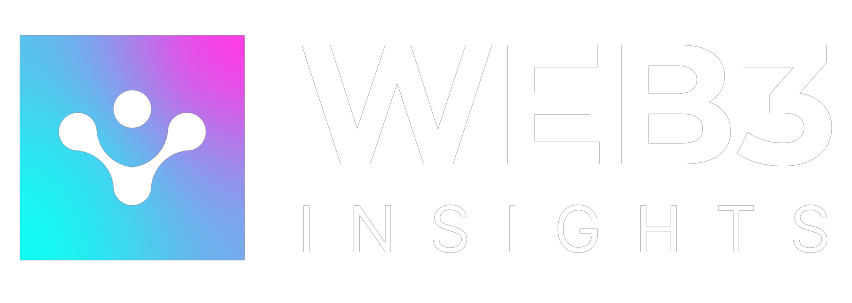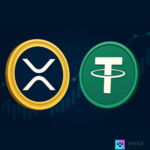When I first started using Tether (USDT), I thought it was just another stablecoin sitting on one network. I had no clue it could actually exist on multiple blockchains. At the time, I simply treated it like a digital version of the U.S. dollar and didn’t think too much about where it lived. But over the years, I’ve learned that one of USDT’s greatest strengths is that it can move across different networks; Ethereum, Tron, Solana, Polygon, and more, depending on where it’s most useful or most cost-effective.
Understanding how to use USDT across blockchains has completely changed the way I handle crypto transactions. I’ve been able to save on fees, speed up transfers, and access a variety of DeFi opportunities that I wouldn’t have touched if I had kept my USDT on just one chain. And in this article, I’m going to walk you through exactly how I do it, why it matters, and what you should watch out for.
Why Tether USDT Exists on Multiple Blockchains
I like to think of USDT as a traveler. It can live in different “cities” in the crypto world; Ethereum, Tron, Solana, Polygon, but it’s still the same asset no matter where it goes. The token is issued by Tether Limited, but they deploy it on multiple networks so people like you and me can use it wherever it’s most convenient.
On Ethereum, USDT is an ERC-20 token. This is where it first became widely recognized, and to this day it’s still one of the most integrated versions across DeFi platforms. On Tron, it becomes a TRC-20 token, known for incredibly low transfer fees, making it popular for exchanges and cross-border transactions. On Solana, it’s an SPL token that offers lightning-fast transaction speeds, perfect for high-frequency trading or gaming. And on Polygon, USDT works within the Ethereum ecosystem but with much cheaper fees, giving you a balance between compatibility and cost efficiency.
The key thing to remember is that while it’s all USDT, the version on each chain is technically different. That’s why sending Ethereum-based USDT directly to a Tron wallet will not work, you’ll lose your funds. That’s also why knowing exactly which chain your USDT is on is the first step to using it properly.
How I Decide Which Blockchain to Use
Over time, I’ve developed a sort of mental flowchart for deciding where to hold and use my USDT. If I’m moving large sums into DeFi protocols, I stick with Ethereum. It’s the most secure and widely supported, even though gas fees can be painful. If I’m sending money to an exchange or paying someone overseas, I default to Tron. The fees are so low that it’s basically the crypto version of a cheap but reliable airline ticket.
When speed is my priority, say I’m trading on a Solana-based DEX or moving funds in and out quickly, I turn to Solana. It’s nearly instant and costs next to nothing per transaction. And if I want access to Ethereum-compatible apps without burning through my funds on gas, I choose Polygon.
Sometimes, I even keep small amounts of USDT on different blockchains at the same time. This way, no matter where an opportunity comes up, I can move fast without waiting for bridging or conversions.
My Experience Using Tether USDT on Ethereum
Ethereum was my first introduction to USDT, and it’s still my go-to when I want maximum compatibility with the DeFi world. Setting it up was simple: I used MetaMask, added the USDT token contract, and then I could store, send, or swap it just like any other ERC-20 token.
I’ve used Ethereum-based USDT for lending on Aave, swapping into other tokens on Uniswap, and even as collateral for more complex DeFi strategies. The big drawback, of course, is gas fees. There have been days when I paid over twenty dollars just to send USDT from one wallet to another. That’s why I usually reserve Ethereum USDT for larger transactions where the percentage cost of fees is less painful.
How I Use Tether USDT on Tron
Tron is my secret weapon for cheap and fast transfers. The first time I sent USDT on Tron, I was almost suspicious because the fee was just one USDT flat. I thought, “That’s it?” Compared to Ethereum’s fees, it felt like a gift.
I’ve used Tron USDT to fund my exchange accounts, pay freelancers, and send money internationally. TronLink is the wallet I use when I need to manage TRC-20 USDT, but a lot of the time, I simply deposit to an exchange that supports it and send it out from there. The low fees and fast confirmations make Tron a network I rely on regularly.
Why I Turn to Solana for Speed
If Tron is my go-to for affordability, Solana is where I go when speed is everything. Transactions settle in seconds, and fees are so tiny that I barely notice them. This has been a game-changer when I’m using decentralized exchanges like Orca or Raydium, where fast execution can mean better prices.
I also use Solana USDT in gaming environments and NFT platforms that accept stablecoins. However, I’m cautious about leaving large amounts of USDT on Solana for long periods because the network has had some downtime issues in the past. I prefer to treat it as a short-term operating wallet rather than a long-term vault.
Polygon as My Middle Ground
Polygon gives me the best of both worlds, access to Ethereum’s ecosystem with far lower costs. I usually bridge my USDT from Ethereum to Polygon using the official Polygon Bridge, but sometimes I withdraw directly from an exchange to the Polygon network if I want to skip extra steps.
On Polygon, I’ve used USDT for yield farming on QuickSwap, lending on Aave, and participating in various NFT drops. It’s an ideal network for when I want to stay within Ethereum-compatible apps but keep my costs minimal.
The Bottom Line
Tether’s ability to operate on multiple blockchains is one of the reasons it has stayed relevant and dominant in the stablecoin market. Knowing how to take advantage of that flexibility can save you money, increase your speed, and open up a whole range of DeFi opportunities.
If you’re only using USDT on one chain, you’re not seeing its full potential. Try exploring at least one more network, and you might just discover how much smoother and more versatile your crypto experience can be.








